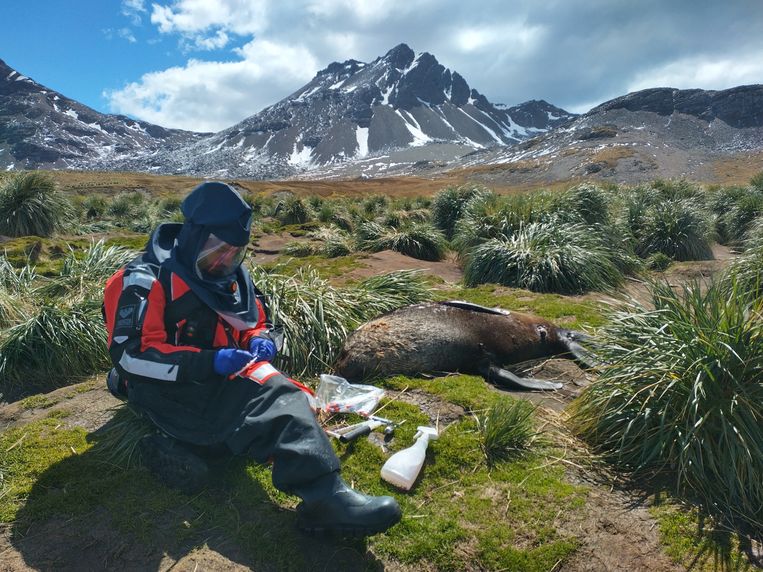
What mammals are already affected by bird flu?
Since 2022, outbreaks of the disease among mammals have been reported to WHO by ten countries on three different continents. The elephant seal joins a series that includes the polar bear, brown bear, fox, lynx and puma. According to the World Health Organization, this concerns at least 26 species of animals in which the so-called highly pathogenic influenza strain (H5N1) has been identified. Such a variant makes infected animals seriously ill. In the Netherlands The H5N1 virus is found in foxes, martins, and cats.
“We think that foxes became infected by eating the carcasses of infected birds,” says virology professor Wim van der Poel (Wageningen University and Research). These are migratory and aquatic birds that carry the virus. Their droppings can also lead to infections.
How amazing is this discovery?
It was already known that the virus was reaching Antarctica. Last August, virologists predicted that bird flu, a collective name for a group of influenza viruses, would reach the continent. This prediction came true in October: a highly pathogenic variant of the virus was identified in large, gull-like seabirds in the South Georgia archipelago and the South Sandwich Islands. So we are in the same place now Infected mammals. The animals likely ate infected carcasses or came into contact with bird droppings.
Experts from the British Animal and Plant Health Agency discovered bird flu in dead elephant seals and fur seals. They also found their peers coughing and coughing, says one of the co-researchers Watchman. SequenceWhich examined the genetic structure of the virus, then found that migratory birds brought the virus with them.
This does not surprise Van der Poel. We've seen the virus spread to South America, and even spread around the southern tip of the continent. So the step to Antarctica is not a big step. The professor confirms that the region in which the bird influenza virus appears depends greatly on the season. “Birds pick it up and take it away as they migrate. Bird migration has been crucial.
Is there a danger to people?
Not right away, says Professor van der Poel. Avian influenza virus has previously been diagnosed in humans, but in all cases there were workers on poultry farms or people who raised poultry themselves. To our knowledge, no human has been infected by other mammals. But this scenario is not far-fetched.
“We see birds infecting mammals and the chain stops there. But in foxes we see typical mutations. If the virus adapts further, it is likely that at some point it will jump from mammals to other animals,” says van der Poel. And before that happens, A whole series of changes still needs to be made. “This can happen quickly with influenza viruses,” warns the professor.
Variants that mutate in mammals pose a risk to humans. “It is therefore crucial that we continue to closely monitor the avian influenza virus by sequencing,” says van der Poel.
What is there to do?
It is no longer possible to stop the progress of bird flu. “If we want to control this disease worldwide, vaccination is the only option.” But although the virus is “transmitted” with migratory birds, it is impossible, according to the professor, to inject wild birds. “There are simply too many species susceptible to bird flu.”
Vaccinating wild mammals also appears unrealistic, despite the success of previous attempts using rabies vaccine for foxes. “Vaccinating mammals is an option, but it is not easy. Such a program is expensive and involves many species of animals that you will have to protect. It is not technically impossible, but in practice it is,” van der Poel concludes.
According to the professor, the key to the solution lies in poultry farming: vaccinating chickens and ducks can prevent the virus from spreading repeatedly to migratory birds. This is already happening in Asia, and France recently started a duck vaccination programme. “Europe has always been against vaccination. But if we don't want to reduce poultry farming, vaccination is really the only option.

“Coffee buff. Twitter fanatic. Tv practitioner. Social media advocate. Pop culture ninja.”











More Stories
Which can cause an increase in nitrogen.
The Central State Real Estate Agency has no additional space to accommodate Ukrainians.
The oystercatcher, the “unlucky national bird,” is increasingly breeding on rooftops.